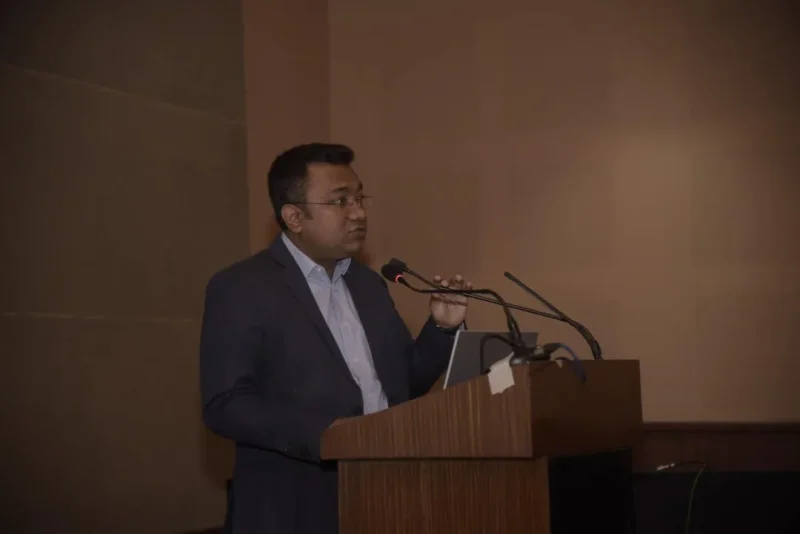Community Pharmacies Help to Improve Access to Health Care – Drug Topics

Report on Pharmacy Deserts and Their Impact on Sustainable Development Goals
Introduction: Aligning Pharmaceutical Access with Global Health Objectives
Access to medications and health services is a critical public health priority that directly supports the achievement of Sustainable Development Goal 3 (Good Health and Well-being). A recent study published in Public Library of Science highlights how an understanding of socioeconomic and infrastructure factors can empower pharmacists to reduce health inequalities. However, the increasing rate of pharmacy closures nationwide presents a significant obstacle to patient access, potentially undermining progress toward universal health coverage and exacerbating existing health disparities, a key concern of SDG 10 (Reduced Inequalities).
The Role of Community Pharmacies in Advancing Public Health
Community pharmacies are integral to the public health infrastructure, offering services that extend beyond traditional medication dispensing. Their contributions are vital for achieving targets within SDG 3.
- Disease Prevention: Pharmacists provide primary and secondary disease prevention services, including smoking cessation programs, weight management, and alcohol misuse counseling.
- Health Services: They offer essential services such as inoculations, health screenings, chlamydia testing, and syringe and needle exchange programs.
By delivering targeted interventions, pharmacists can play a crucial role in closing the health gap between the most and least disadvantaged patients, thereby addressing social, economic, and environmental disadvantages and contributing to SDG 10.
Analysis of Pharmacy Deserts in the United States
Data from the 2020 Decennial Census and the 2021 American Community Survey were analyzed to identify areas with limited access to pharmaceutical services. The findings reveal a significant challenge to equitable healthcare access.
- Prevalence: A total of 3,105 census tracts were classified as “pharmacy deserts.”
- Affected Population: These areas are home to over 10 million people, representing 3.1% of the total US population.
Socioeconomic and Demographic Factors Exacerbating Health Disparities
Pharmacy deserts are characterized by a combination of socioeconomic, demographic, and infrastructural factors that reflect deep-seated inequalities, impacting multiple SDGs.
- Demographic Profile: These areas typically have a higher proportion of Black, Hispanic, and American Indian and Alaskan Native (AIAN) inhabitants, alongside lower proportions of female and elderly residents. This points to systemic issues targeted by SDG 10.
- Socioeconomic Status: Residents are more likely to have a high school education or less, lack health insurance, and have a lower median income, creating barriers to health and well-being that conflict with the aims of SDG 1 (No Poverty) and SDG 3.
- Health and Accessibility: A higher prevalence of ambulatory disability was noted, indicating that populations with existing health vulnerabilities face compounded access challenges.
- Infrastructural and Systemic Barriers: Pharmacy deserts are associated with a higher median Digital Divide Index (DDI) and a high redlining index, highlighting how systemic underinvestment and historical injustices impact community infrastructure, a concern central to SDG 11 (Sustainable Cities and Communities) and SDG 16 (Peace, Justice and Strong Institutions).
Key Findings on Systemic Drivers of Inequality
The investigation identified strong correlations between systemic factors and the prevalence of pharmacy deserts, underscoring the challenge of achieving SDG 10.
- Census tracts affected by a high redlining index had a twofold increased likelihood of being a pharmacy desert.
- Tracts with a moderate or high Digital Divide Index were more likely to be pharmacy deserts.
- Areas categorized as more segregated for Black, Hispanic, or AIAN populations were significantly more likely to be characterized as pharmacy deserts.
Conclusion: Addressing Pharmacy Deserts as a Mandate for Sustainable Development
The data indicates that vulnerable communities already facing economic and social challenges are being left with reduced access to essential pharmacy services. This situation exacerbates existing health disparities and hinders progress toward key Sustainable Development Goals, particularly SDG 3 and SDG 10. The finding that contemporary redlining significantly increases the risk of a census tract being a pharmacy desert highlights how systemic underinvestment and structural inequality perpetuate health disparities among disadvantaged populations. Addressing the root causes of pharmacy deserts is therefore essential for building inclusive, healthy, and sustainable communities as envisioned by the 2030 Agenda for Sustainable Development.
1. Which SDGs are addressed or connected to the issues highlighted in the article?
SDG 3: Good Health and Well-being
- The article’s central theme is health disparities and access to healthcare, which directly aligns with SDG 3. It discusses the importance of “access to medications and health services” and the role of community pharmacies in providing public health services like “smoking cessation, weight management…inoculation, screening, and chlamydia testing.” The existence of “pharmacy deserts” is presented as a significant barrier to achieving good health for all.
SDG 10: Reduced Inequalities
- This goal is addressed through the article’s focus on how health disparities are linked to socioeconomic and demographic factors. The text explicitly states that “health inequalities” are caused by “social, economic, and environmental disadvantages.” It highlights that pharmacy deserts disproportionately affect vulnerable populations, including those with lower income, less education, and specific racial groups (“Black, Hispanic, and American Indian and Alaskan Native (AIAN) inhabitants”), as well as those affected by systemic issues like “residential redlining.”
SDG 11: Sustainable Cities and Communities
- The concept of “pharmacy deserts” as specific geographic areas (“census tracts”) lacking access to essential services connects to SDG 11. The article discusses how infrastructure factors, such as the “digital divide index” and “contemporary redlining,” contribute to creating communities where residents cannot access basic pharmacy services, thereby undermining the goal of creating inclusive and sustainable communities.
2. What specific targets under those SDGs can be identified based on the article’s content?
Targets under SDG 3: Good Health and Well-being
- Target 3.8: Achieve universal health coverage, including financial risk protection, access to quality essential health-care services and access to safe, effective, quality and affordable essential medicines and vaccines for all. The article directly addresses this by highlighting the “growing obstacle for patients to access medications” due to pharmacy closings. It also notes that residents of pharmacy deserts have a higher likelihood of having “no health insurance,” which relates to financial risk protection, and discusses the role of pharmacists in improving access to vaccinations.
Targets under SDG 10: Reduced Inequalities
- Target 10.2: By 2030, empower and promote the social, economic and political inclusion of all, irrespective of age, sex, disability, race, ethnicity, origin, religion or economic or other status. The article’s findings that pharmacy deserts have a higher proportion of “Black, Hispanic, and American Indian and Alaskan Native (AIAN) inhabitants,” individuals with “ambulatory disability,” and those with lower income and education levels directly point to the inequalities this target aims to eliminate.
- Target 10.3: Ensure equal opportunity and reduce inequalities of outcome, including by eliminating discriminatory policies and practices. The article’s finding that “census tracts with a high redlining index had a 2-fold increase of being in a pharmacy desert” identifies a specific discriminatory practice (redlining) that leads to unequal health outcomes and reduced access to essential services.
Targets under SDG 11: Sustainable Cities and Communities
- Target 11.1: By 2030, ensure access for all to adequate, safe and affordable housing and basic services and upgrade slums. Access to a pharmacy is a basic health service. The article’s entire analysis of “pharmacy deserts” at the “census tract” level is about the lack of this basic service within communities, making this target highly relevant.
3. Are there any indicators mentioned or implied in the article that can be used to measure progress towards the identified targets?
Indicators for SDG 3 Targets
- Proportion of the population living in pharmacy deserts: The article provides a direct measurement, stating that “3105 census tracts were classified as pharmacy deserts, including over 10 million people, which equated to 3.1% of the US population.” This can be used as an indicator to track access to essential medicines and health services.
- Proportion of the population without health insurance: The study notes that pharmacy deserts have a “higher proportion of inhabitants with… no health insurance.” Tracking this percentage, especially in vulnerable areas, measures progress towards financial risk protection under universal health coverage.
Indicators for SDG 10 Targets
- Disaggregation of data on access to services by demographic and socioeconomic factors: The article provides data disaggregated by race (higher proportions of “Black, Hispanic, and AIAN inhabitants”), education level (“less than high school education”), disability status (“ambulatory disabilities”), and income (“Median income was also lower”) in pharmacy deserts. These disaggregated statistics serve as direct indicators of inequality.
- Redlining Index: The study uses a “high redlining index” as a quantifiable measure of systemic and historical discrimination that impacts current access to health services. This index can be used as an indicator to measure the impact of discriminatory practices.
Indicators for SDG 11 Targets
- Number and percentage of census tracts classified as pharmacy deserts: The article’s identification of “3105 census tracts” as pharmacy deserts is a clear indicator of the lack of access to basic services at a community level. A reduction in this number would indicate progress toward Target 11.1.
- Digital Divide Index (DDI): The article mentions that pharmacy deserts had a “higher median digital divide index (DDI).” This index measures disparities in digital access and literacy, which is an increasingly important component of accessing services in modern communities.
4. SDGs, Targets, and Indicators Table
| SDGs | Targets | Indicators |
|---|---|---|
| SDG 3: Good Health and Well-being | 3.8: Achieve universal health coverage, including access to quality essential health-care services and affordable essential medicines and vaccines for all. |
|
| SDG 10: Reduced Inequalities | 10.2: Promote the social, economic, and political inclusion of all, irrespective of race, disability, or economic status.
10.3: Ensure equal opportunity and reduce inequalities of outcome, including by eliminating discriminatory practices. |
|
| SDG 11: Sustainable Cities and Communities | 11.1: Ensure access for all to adequate, safe and affordable housing and basic services. |
|
Source: drugtopics.com

What is Your Reaction?
 Like
0
Like
0
 Dislike
0
Dislike
0
 Love
0
Love
0
 Funny
0
Funny
0
 Angry
0
Angry
0
 Sad
0
Sad
0
 Wow
0
Wow
0

















































:focal(1500,1000)/https://media.globalcitizen.org/a6/9a/a69a4720-d8a1-4715-b596-18738d03c05c/rotary_polio_hero_image.jpg?#)






/countries/sri-lanka/photo-credit---dmc-sri-lanka.tmb-1200v.jpg?sfvrsn=dc298bcc_1#)
















